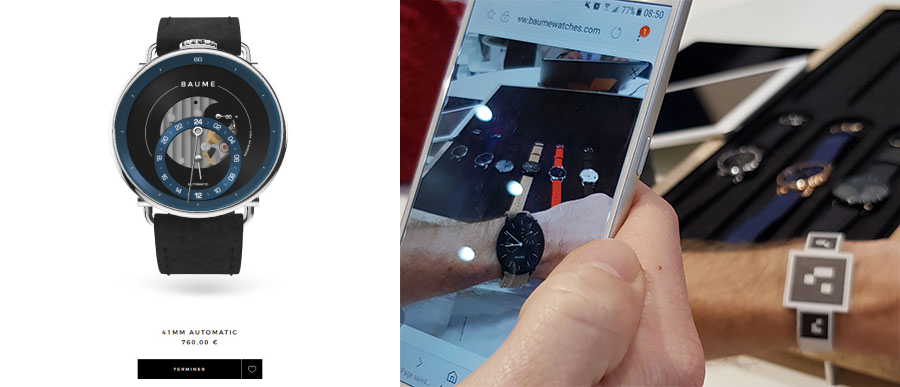Customer Journey: It’s Not as Difficult as You Think
By Yahong Zhang |Table of contents
Today almost every customer-oriented and data- driven organization takes advantage of the customer journey to understand consumer demands and ultimately improve shopping experience. Understanding the newest trends that have been proven to deliver a seamless shopping experience will make life easier for both marketers and consumers.
What is it?
Customer journey is the complete shopping process that a customer needs to go through to make a purchase, from idea generation to payment and reorder.
The purpose is to engage customers through all points of contact via interaction and media to better understand the emotions, desires and demands, while identifying behavioural patterns to appropriately stimulate better customer experiences.
The concept was initially created as an outside-in business management technique, of which the central focus was improving customer experience as to build strong relationships with them.
A good customer journey reflects on how companies use a wide-array of channels to communicate with their customers, including cross-channel interaction, from devices to touch points throughout every stage of the customer lifecycle.
Fact is, 86% of customers are willing to pay more for products that deliver great experiences.
And the customer journey does play a vital role in building positive experiences. They are drawn directly from the client’s point-of-view and therefore perfectly desireable to be used to solve their pains.
Constant feedback from customers is key. By putting themselves in consumers’ shoes companies are therefore able to meet and exceed their expectations.
How to Create a Customer Journey Map
Harvard Business Review points out that it is better to simply think of them as diagrams that showcase the steps customers go through when engaging with your company. These experiences could take place in brick and mortar stores, online websites or any other channel. The more touchpoints, the more complicated it becomes.
1. Make the team realize the importance of such an approach.
Stakeholders need to be onboard regarding the value of the creation; otherwise it will be difficult later to discuss the allocation of resources.
2. Set well-defined objectives.
This includes both short term and long terms goals.
3. Profile your personas and their demographics.
4. Represent the complete purchasing process,
By focusing on how the consumer gathers and deals with information, before making a purchase. This means that the customer journey map must include all phases: awareness, consideration, purchase, retention, advocacy.
5. Shaping Touch points.
Touch points are places along the journey map where customer interaction with the company or brand happens. It is imperative that every one of them identified and noted so that we could analyze which works better and which should be eliminated. We can measure touchpoints correctly via forms, interviews, social media engagement, email marketing, call centers, paid ads, website traffic or any other method.
6. Capture consumer verbatim, identify pain points and opportunities for improvement.
Collect and analyze quotes that express how audiences relate to brands in different phases of the purchasing process on different touch points. And make sure that you respond to customers’ needs and desires.
7. Identify KPI’s.
8. Finally use both qualitative and quantitative research to compile an effective map.
9. Implement your findings to get results.
All successful strategies are actionable. Once all touchpoints are identified, put those results into effect and see how they work digitally. If you notice any abandonment before purchase is completed, analyse and make necessary changes.
Technologies to improve the customer journey
The latter half of this article will be focusing on the utilization of the latest technologies aimed to optimize the process, through navigation via location-based computing, visualization via 3D product configuration, interaction via virtual reality technology and automatic communication via chatbots.
Location-based computing
The second technology which aims to enhance customer experience is the location-based computing. This technology allows customers to be navigated through their smartphones on the products that they are searching for.
It is useful to be activated while they are shopping in physical stores or when they need to know what the promotions are currently being offered by brands.
Basically, this technology is about letting the computers or devices locate where the products are. Location-based promotions and navigation-based services are the two most popular technologies in location-based computing.
For example, the navigation apps operate through VR and location-based services, whereby a yellow line will be produced on the floor through the camera lens and customers only have to follow that line.
According to Lowe’s Companies Inc, a company which launched this technology onto a mobile app called The Lowe’s Vision, customers would have to list out the products that they want to purchase in the app’s shopping list and then start navigating by pressing a button on their smartphones.
On the other hand, the location-based promos would locate the customers and provide suggestions or notifications about the nearest stores which are currently holding sales promotion.

Benefits for business and end users
For the brands prospect, these technologies could promote their items or products and would in turn increase their sales through the attention received via promotional activities.
In fact, based on Market Trends analysis, location-based service is among the context aware computing market which is expected to increase at Compound Annual Growth Rate (CAGR) of 24.8% by 2025 (Halaye, 2019).
Other people might think that location-based services are only beneficial for businesses as it mainly used to promote their brands. However, the benefits that customers get out of it is more than what people think it is.
Meanwhile, for the customers’ prospect, these technologies could save them a lot of time finding the items that they are looking for while shopping in-store or while looking for great deals near them.
It also could allow them to estimate their budget beforehand as the details and prices have been included inside the app itself, which in turn could save them a lot of money.
Therefore, it is clear now location-based services are not only meant to boost businesses, increase ratings, etc. as it also provides convenience to customers.
3D product configuration
This booming technology has come to an extend where it has transformed purchasing experience from only providing plain text description with meaningless images to visually displaying the product using virtual and augmented reality (VR and AR).
This kind of technology is also known as 3D product configurators, whereby the customers can personalize the desired products as per their preference while it is being visually displayed.
Source: Guerlain 3D perfume configurator in cooperation with Hapticmedia
With the 3D product configurator, customers can view the details of the materials used within the product itself, other than doing their own personalization onto the items.
Applications of 3D configuration
3D product configurators are applied onto many types of products, including high jewellery, watches and bags, personalized clothing design, furniture, vehicles, shoes and even bottles!
According to Novora, 3D product configurators have been proven to be an efficient tool for businesses to sell their products.

Source: Guerlain Rouge G 3D lipstick configurator in cooperation with Hapticmedia
The deployment of 3D product configurators comes with many great benefits for both businesses and customers.
Benefits for business
For businesses, it provides a better engagement rate and therefore higher conversion rates.
As users commonly prefer to manipulate elements on websites, which in turns allow brands to understand better about what the customers are looking for in a product, brands now can focus on giving the customers a maximum shopping experience.
Other than that, the most important part about using 3D product configurators is that it contributes to the sales growth as it intelligently recommends more expensive choices to users.
From these choices, users would voluntarily buy the product just because it fits their requirements for a certain product, without thinking long of the prices.
According to Forbes, a business which used this technology have achieved a 40% of higher online conversion rates and an average of 30% sales increase when they replaced 2D models with the 3D ones (Columbus, 2019).
Other than that, Hapticmedia suggested that brands such as Guerlain have gained two times the conversion rates when 3D product configurator is integrated into their business.
Benefits for clients
On the customers’ end, a 3D product configurator provides a more fun and unique way of shopping than the traditional method of just reading descriptions attached with pictures.
Furthermore, as the prices vary when the customers customized their products, it gave them the price information as per the designs and materials that they have chosen, thus giving them more insight on how the pricing is normally done for a certain item.
Virtual Reality (VR) Technology
Customer involvement has become key for brands to make the customer journey as immersive and engaging as possible. Virtual Reality is one such tool that companies are utilizing to interact with their customers.
This technology transforms shopping experience and therefore improves customer satisfaction level, by bringing information to the client in real time. It creates a virtual environment filled with new experiences by replacing our physical reality into a computer generated one.
A prime example of which is the Pokémon GO, which displays digital images through reframing our surrounding environment.
Such technology presents huge market values
The potential of Virtual Reality to impact the future of customer interaction serves as a major reason why giants like Apple and Google are constantly working to innovate and improve frameworks for Virtual Reality and Augmented Reality, with the launches of Apple’s ARKit and Googles ARCore.
According to Deloitte, almost 90% of companies with an estimated annual revenue of $100 million have already started to plan and apply AR and VR to their business, with the global market for AR and VR to reach a staggering worth of $94.4 billion by 2023.
A few examples of VR implementations

Source: Baume connected ecommerce enabled by VR/ AR technology in cooperation with Hapticmedia
An example of integrating Augmented Reality into e-commerce platforms can be taken from Baume, a high- end watchmaking brand.
The company is currently offering customers a 3D configurator by Hapticmedia embedded in their website, which provides an interactive 3D product presentation that enables customers to do online customization so to create their own unique watch designs.
In addition, the brand also offers clients the opportunity to virtually try on the customized watch directly on their wrists using a paper wristband. This practice largely improves the shopping experience for customers by engaging and involving them in the design process while causing little extra costs to the company.
IKEA has also lanuched a simple and accessible VR-based app, which allows customers to place furniture wherever they like. This helps customers to decide which products they want before making the purchase decision.
With the Volvo Reality app, you can test drive a car on your mobile phone and get the opportunity to understand a car like never before in such an immersive experience.
Benefits of virtual reality technology to business
Virtual reality technology helps brands provide value-added services as well as engaging and interactive solutions to their customers. It is a perfect tool to convey ideas through distance, i.e. especially for ecommerce and gives an opportunity to for clients better understand or even experience the products without touching them.
Clientele wise, it offers users an immersive shopping experience where they can use simulation devices to feel the products, get up close and initiate a personal tie with the brand.
Chatbots
Chatbots is another technology which have been proven to successfully enhance customer experience. Unlike the previous two mentioned technologies, chatbots is a great tool for customers to get to know more about the details of their purchases, such as product purchasing status, delivery status, product support and a few others related to their shopping experience.
Through chatbots, customers will interact with the system instead of human beings and the system will send messages through the means of Artificial Intelligence (AI).

Source: Sephora chatbot
Today, many businesses including airlines and fast-food chains are using chatbots to cut their cost of operation rather than employing the traditional human support team, as well as using chatbots to provide an interactive customer experience.
These businesses including the world known brands such as Air Asia, KFC, McDonald’s, Pizza Hut, Sephora, Spotify, Staples and even the Wall Street Journal!
Benefits for business and end users
Furthermore, according to a business website called Entrepreneur India, an obvious benefit that chatbots could offer to businesses is that this technology could cut their cost of operation by 60-70% (Vaish, 2019), avoiding training agencies and human labours which may need more than that figure.
Other than that, the deployment of chatbots in businesses could save them $8 billion in the next 5 years, which is a huge figure for businesses.
Chatbot marketing is useful for an effective, modernized and engaging customer service.
To be precise, customers could get an immediate response from chatbots as it is designed and invented to process data and reply messages on a real-time basis.
This way, customers do not have to wait for days to get the replies to their enquiries when they have an issue with their purchases or payments. This technology is commonly served in online retailers or businesses and provides convenience to the customers and could save their time while doing their purchase.
Conclusion: technology as a win-win solution
When looking back to the basic, these technologies provide a win-win situation which benefits both businesses and customers while a smooth customer journey is being delivered through them.
The most pronounced and common benefit that businesses could get out of using such technologies in their operations is the increase in sales figure. Therefore, those who have not yet investigated the mentioned technologies might want to learn from the already proven successful businesses.
Contact Hapticmedia now to see our successful user cases and the visible improvement we have brought to our clients. You will be amazed.


